Headcount finalised sans third-party audit
CCI to make a final ruling without 5% audit
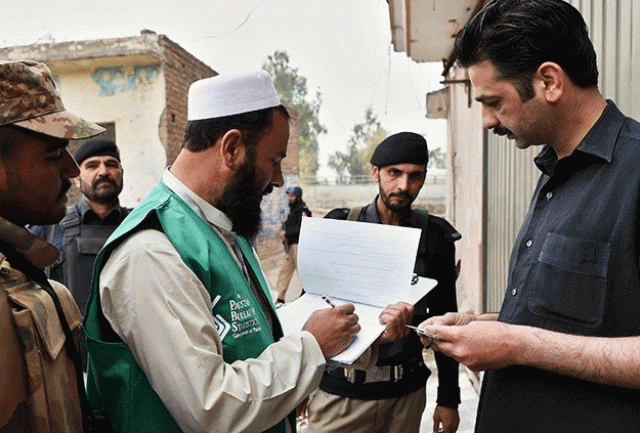
PHOTO: AFP /FILE
The final count shows a slight increase in the share of Muslim and Hindu populations. However, Christian and Ahmadi populations registered a marginal decline.
Pakistan retained its status of a predominantly Muslim nation: as many as 200.35 million people here subscribe to Islam.
Demographically, the percentage of Urdu, Punjabi and Balochi-speaking people declined against the results of the 1998 population census. But the ratio of Pushto and Seraiki-speaking people increased over the past 19 years.
The number of children up to 15 years of age reduced but the working age population increased over the same period.
The Pakistan Bureau of Statistics (PBS) is expected to submit the final census results today (Sunday) to the CCI. The final results will be officially released after the CCI’s approval.
6th census findings: 207 million and counting
Sindh’s opposition
Sindh is likely to oppose the final census results.
A press note issued by Senator Taj Haider stated that the hurriedly-called CCI meeting was in gross violation of an agreement signed by leaders of all political parties in the Senate, which called for a recount of a 5% blocks. The CCI had directed the PBS to conduct the sample survey for addressing the concerns of Sindh-based political parties.
In August last year, the CCI approved the release of provisional population figures of 207.754 million people.
The final results showed the total population of Pakistan to be 207.684 million, a reduction of 68,738 people or 0.033% against provisional results announced in August last year.
Final results showed that the country’s population increased by 75.4 million over the past 19 years, registering an increase of 57% at an annual growth rate of 2.4%.
The results also showed that Punjab’s still hosted 52.96% of the total population.
Balochistan and K-P benefited by the reduction in Punjab’s population: Sindh’s share in total population remained unchanged at 23.04%.
About 82% of the federal divisible pool is distributed on the basis of population.
‘Pakistan needs to control population growth to become high middle-income country'
Religion distribution
Muslims constituted 96.28% of the total population in 1998, but 19 years later the share of Muslims in total population increased to 96.47%.
Since overall population increased by 75.4 million persons, followers of all religions have grown in absolute terms.
The incidence of Hindu population increased from 1.6% to 1.73% or 3.593 million individuals. The population share of scheduled castes also increased from 0.25% to 0.41%, according to unofficial final results.
The share of Christian population, however, decreased from 1.59% of the total population in 1998 to 1.27% in 2017. Similarly, the population of Ahamdis also decreased from 0.22% to just 0.09%.
The population share of other religions also reduced from 0.07% to 0.02%.
Mother tongue
Even though about four out of 10 Pakistanis declared Punjabi as their mother tongue, the share of Urdu and Punjabi-speaking population decreased over the past 19 years. About 38.78% of the population declared Punjabi as their mother tongue in the latest census against 44.15% over 19 years ago. About 91.96 million Pakistanis are born Punjabi.
The share of Urdu-speaking population reduced from 7.57% to 7.08% over the past 19 years. Similarly, the share of Balochi-speaking population dipped from 3.57% to 3.02% of the total population.
The number of Pushto-speaking people significantly increased in the past 19 years. Against 15.42% in 1998, as much as 18.24% of the total population is by birth Pushto-speaking. The share of Pushto-speaking people in the total population increased by 3% over the past 19 years. In absolute terms, there are about 37.9 million Pushto-speaking people in Pakistan.
Population rising at an alarming rate: Sanjrani
The percentage of Seraiki-speaking people has also increased by 1.7% to 12.19% of the total population. There are about 25.3 million Seraiki-speaking people in Pakistan, mostly living in southern Punjab. The Hindko-speaking people are 2.44% of the population, Kashmiris are only 0.17% and Brahvi 1.24%.
As much as 2.26% of the total population speaks other languages – down from 4.66% in 1998.
Age-group breakdown
Over the past 19 years, the share of children of up to 15 years of age decreased from 43.4% of the population to 40.31%, indicating the efficacy of population control programmes. Five million children or 2.44% of the population are below the age of one year.
In 1998, about 14.8% of the population was below five years of age, and this ratio has now come down to 14.04%.
As much as 30.5% of the population was below the age of 10 years in 1998, now 28.5% of the population is in the same age bracket.
The share of population above 18 years of age is now 53.4%, up from previous level of 51.25%. Almost 56% of the population is between 15 and 64 years of age against 53% 19 years ago. The share of elderly people above 65 years of age also marginally increased from 3.5% to 3.71%.
Urban-rural trends
As much as 63.6% of the country’s population (or 132.2 million people) still lives in rural areas. This ratio was 67.5% in 1998. The urban population stood at 75.58 million in 2017, or 36.44% of the total population. In 1998, the share of urban population was 32.52%.
Sindh is the most urbanised province with 51.92% of its population living in urban areas against 48.9% in rural areas, in 1998. Punjab is the second most urbanised province with 36.86%. The least urbanised province is K-P where only 18.8% population lives in cities. In Balochistan, 27.62% population lives in urban areas.
Population control a way to tackle climate change
Gender divisions
Women’s share in total population increased by 1% in the past 19 years, final census results showed. The female population stood at 101.314 million, or 48.8% of the total headcount, according to the final 2017 results. The male population increased to 106.3 million or 51.2%.
Punjab
Punjab retains the status of being the most populated province, with a population of 109.989 million or 52.94% of the total headcount. Over the past 19 years, the province’s population increased by 36.4 million, or 49.4% higher than the 1998 statistics.
Sindh
Sindh remained the second most populated province with 47.854 million people, or 23.04% of the total population. Sindh’s population grew by 57.3% or 17.44 million during the past 19 years but its overall share in national population remained unchanged.
K-P
K-P’s population stood at 30.508 million – which was 14.69% of the total population, as compared to 13.4% in 1998. Its population grew by 12.78 million or 72% — the second maximum increase. The annual growth rate in K-P remained at 2.89% -- the third highest among all the federating units and above the national average.
Terror war adds to K-P's disabled population
Balochistan
Balochistan’s population stood at 12.395 million or 5.94% of the total population, according to the 2017 census. In past 19 years, its population grew by 5.8 million or 88% — the maximum increase in the population of any federating unit in terms of percentage. Its share was only 4.96% as per the 1998 census. The province’s annual growth rate was 3.37%, the highest after the federal capital territory and far above the national average. Islamabad Capital Territory’s population stood at two million.
The population of Fata stood at 4.993 million.
Council of Common Interests
The Council of Common Interests (CCI) is likely to make the final ruling on the provisional census results without applying a third-party 5% audit in an exclusive meeting on Sunday, just five days before the assemblies complete their respective terms.
The meeting, scheduled to be held on May 14, was postponed because of the former prime minister’s statement on the Mumbai terror attacks and subsequent meeting of the National Security Committee, which discussed the same issue.
According to sources in Ministry of Inter-Provincial Coordination, the Khyber-Pakhtunkhwa (K-P) representatives may not be able to attend the meeting because of a special session convened for Fata bill. Nevertheless representatives from Sindh, Balochistan and Punjab will attend the meeting.
According to senior officials, the government has decided to do away with the third-party validation of 5% results of the National Housing and Population Census conducted in 2017.
It is also likely that after the approval, the government will release the detailed census data, delayed by political bickering and Sindh’s opposition to provisional census results. This also delayed the process of audit.
“The government has been completely helpless and racing against time. But the real impediments were systemic such as audit firms and the time lapsed since the census,” said an official in IPC.
Officials maintained that delays made it impossible for the government to go ahead with the independent audit.
“Besides, hiring a firm [to do the job using] the painstaking process is prescribed by the Public Procurement Regulatory Authority (PPRA). Census itself took more than six months,” said another senior official.
Secretary of the Ministry of Statistics Rukhsana Yaseem pointed out serious impediments that delayed the validation exercise in a standing committee meeting. “The primary hurdle is time factor.”
According to her, the census results should have been validated within a couple of months after the census.
She also cited Pakistan Peoples Party’s Taj Haider, who wanted to hold the audit under provisions other than those agreed upon in the CCI.
Census ended on August 25, 2017 and soon after, the provisional results were approved by the CCI approved provisional results.
The CCI had, in principle, agreed to revalidate the results through an independent audit after encountering objections, especially from Sindh and PPP.
The government is likely to share its actual position on the issue of the audit and why this procedure was delayed.
Water shortages
The CCI will also discuss the growing water shortage in the country in the wake of dry weather and embarrassing setback in talks with the World Bank on Indus Waters Treaty.
Sindh already insisted that it was being robbed off its due water share.
At a recent meeting of a parliamentary panel, Sindh’s representative and official of the Indus River System Authority (IRSA) argued over the water sharing issue.

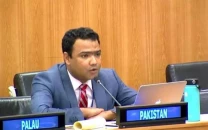
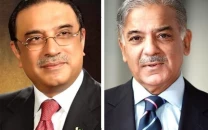


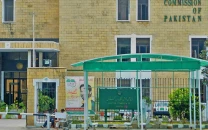
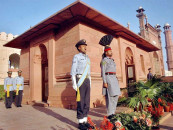












COMMENTS
Comments are moderated and generally will be posted if they are on-topic and not abusive.
For more information, please see our Comments FAQ